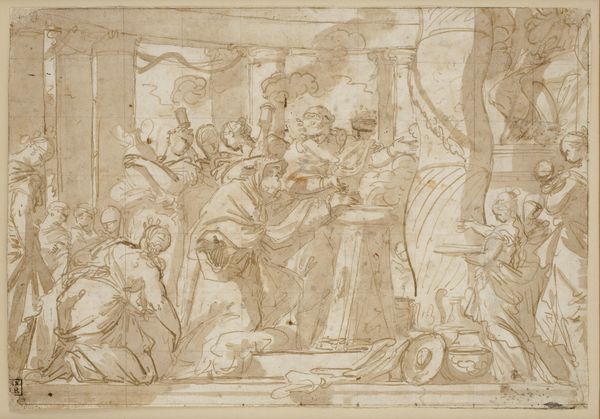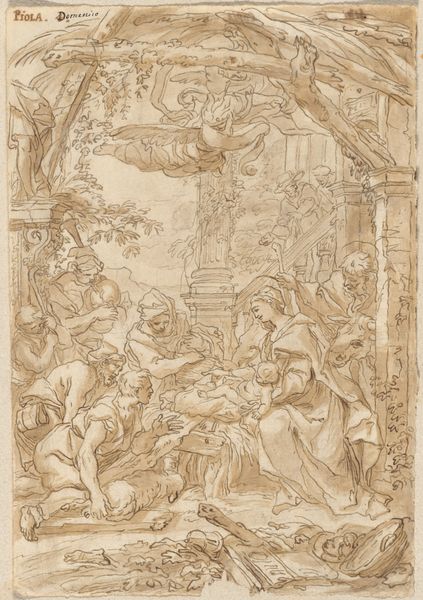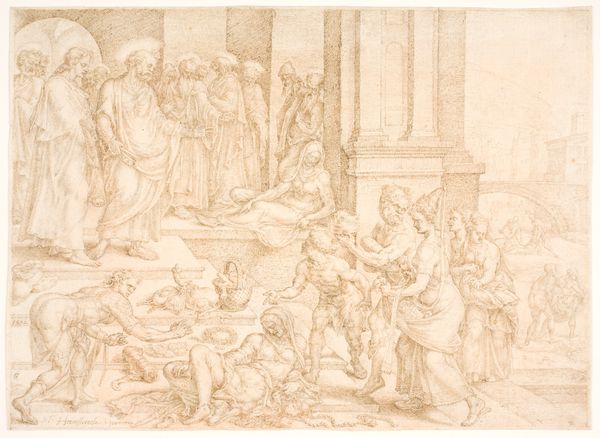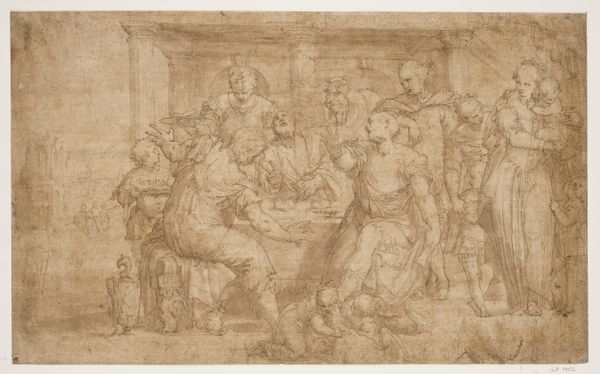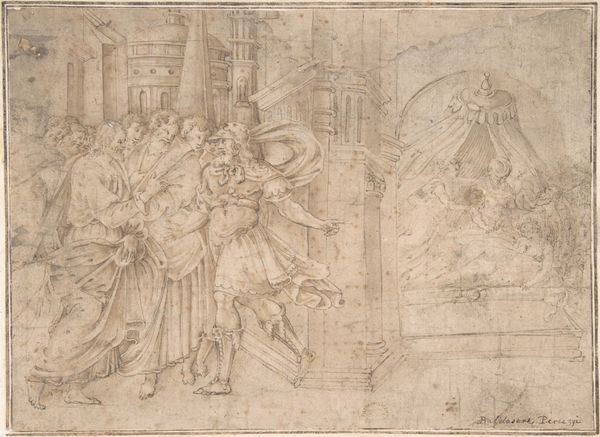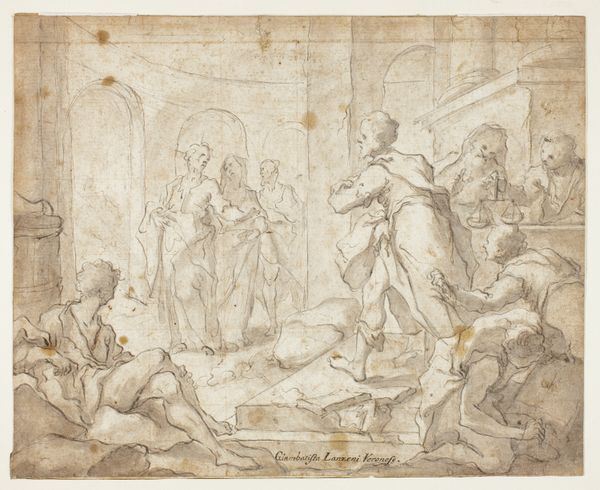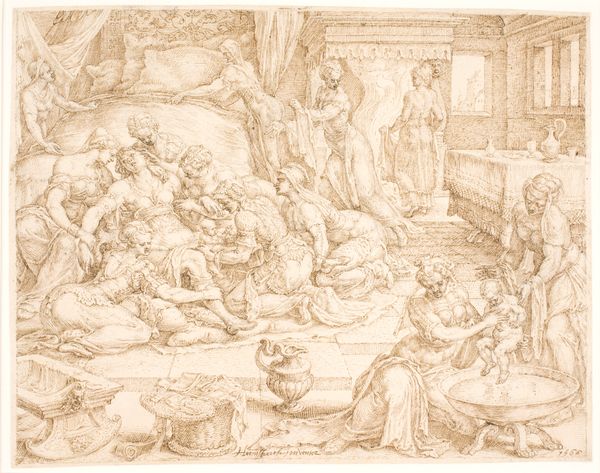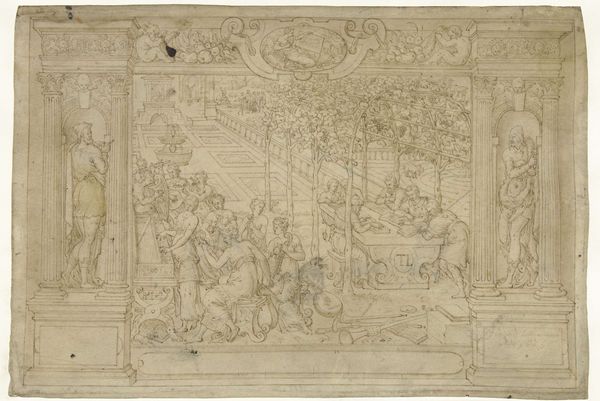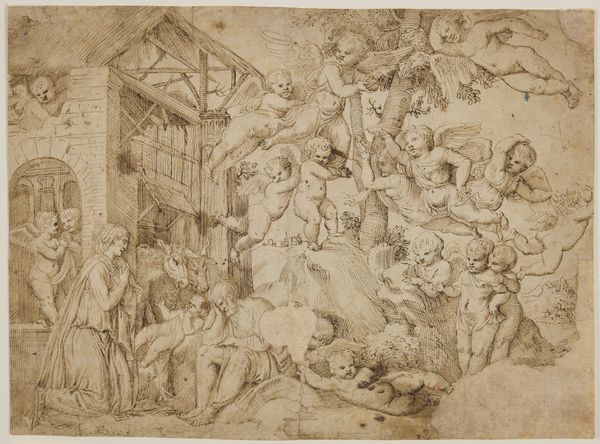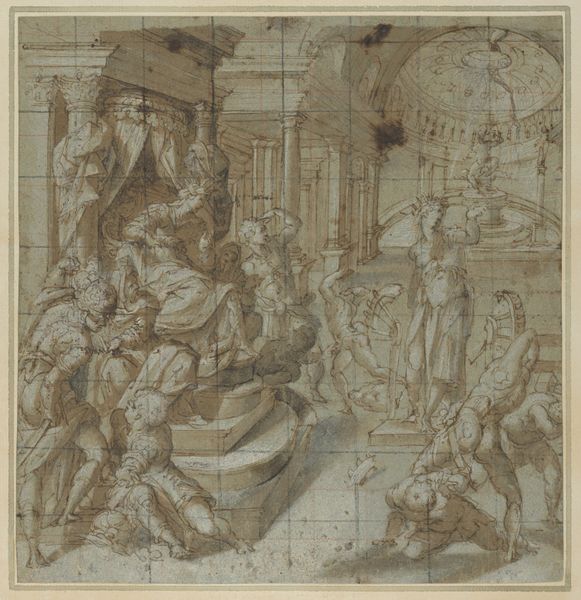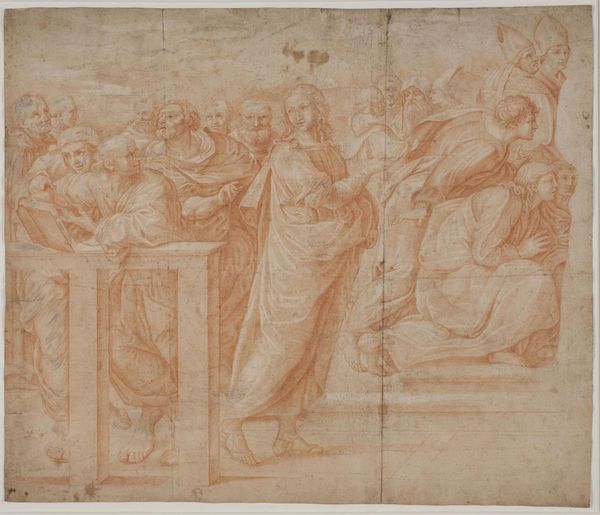
Petrus verloochent Christus, voorgesteld in de hal van het gerechtsgebouw 1810 - 1876
0:00
0:00
josephvonfuhrich
Rijksmuseum
drawing, paper, pencil
#
drawing
#
narrative-art
#
pencil sketch
#
classical-realism
#
etching
#
figuration
#
paper
#
pencil
#
history-painting
#
academic-art
Dimensions: height 305 mm, width 395 mm
Copyright: Rijks Museum: Open Domain
Curator: Here we have Joseph von Führich's drawing, "Peter's Denial of Christ, Represented in the Hall of Justice." It's a pencil drawing on paper, estimated to have been created sometime between 1810 and 1876. What's your immediate impression? Editor: Stark. It’s all lines and angles. The almost architectural rendering of the scene clashes with the very human drama being portrayed. The starkness and near bareness gives a feeling of cold detachment. Curator: It's interesting that you focus on that detachment, because the subject is one of deep personal betrayal. This piece tackles a pivotal moment in Christian narrative, Peter's denial of Jesus as foretold. What symbolic elements do you see contributing to the emotional weight? Editor: Well, there's Peter himself, huddled near what seems like a doorway or corner on the right. He appears to be covering his face, perhaps in shame. The details of that shame are, in turn, represented in the architecture. He is trapped inside the symbolic room. Curator: Absolutely, and placing him outside the central action highlights his isolation. This piece resonates with academic art traditions emphasizing historical or narrative themes that offer moral lessons for society. How do you feel it speaks to the broader sociopolitical context of religious imagery at the time? Editor: Considering the time period in which the art piece was likely finished, religious sentiment was used often to build nationalism. But here, rather than build toward some sense of glory, there's guilt. The focus on Peter’s humanity could represent a broader interrogation of human failings and the burden of faith. Curator: I agree. Führich really humanizes a biblical story that can be easily viewed as entirely moral and pious. It is easy to connect it to a larger cultural project aimed at unifying national identity around shared, but often conflicted, historical and moral narratives. Editor: Seeing it through the lens of religious sentiment creates even more questions. The cold architectural perspective is not entirely detached but has a purpose of portraying shame as being within human nature. I'm struck again by the raw honesty. Curator: It is as though Führich wants his viewers to wrestle with their own capacity for denial and betrayal. It creates a viewing experience filled with conflict. Editor: I appreciate how unpacking this drawing's symbolism illuminates those historical tensions. Thank you for sharing the socio-political framework of this artwork. Curator: And thank you for connecting its personal impact to its grand narrative.
Comments
No comments
Be the first to comment and join the conversation on the ultimate creative platform.
